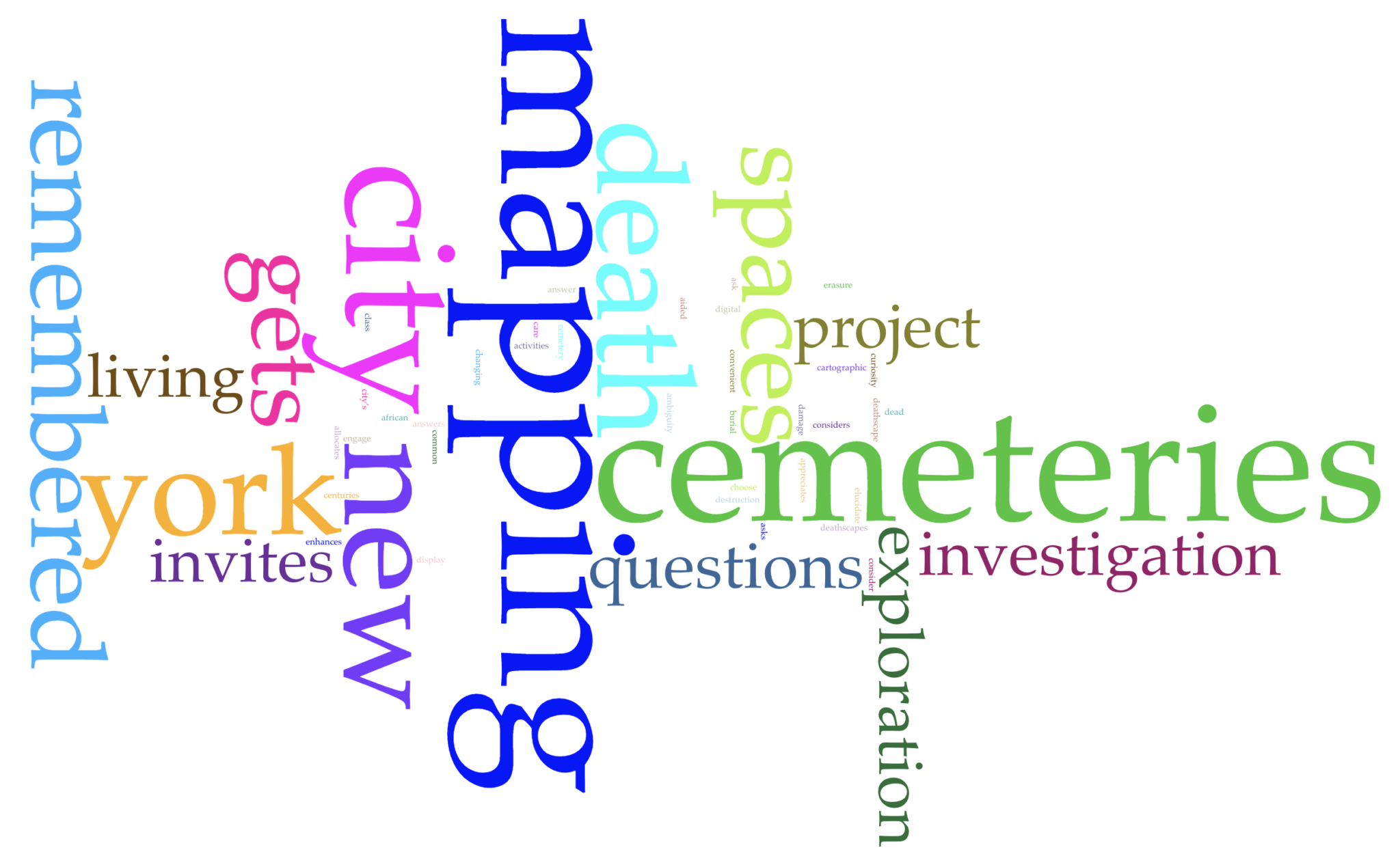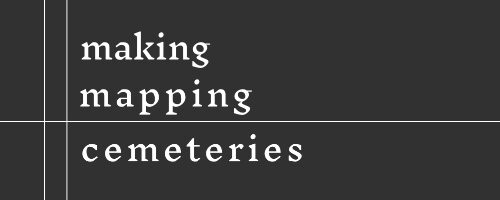Mapping Cemeteries is a digital humanist timeline and mapping project exploring the deathscape across New York City through a necropolitical, historical, and infrastructural lens, and asking the fundamental question of who gets to be remembered after death.

Our Team
![]()
Brianna Caszatt
Brianna hails from Michigan but has called Queens home for almost 13 years. She is a copy chief and copy editor by day and a graduate student in the Master of Arts in Digital Humanities program at the Graduate Center of the City University of New York (CUNY) by night.
Mapping Cemeteries brings together her interests (some old and some new-found) in social justice, memory studies, infrastructure, and mapping. The original idea for the project was hers, but what the project has become is so much more than she ever could have expected, and it is all thanks to the creative and collaborative energy of the entire team. In her primary role as project manager, she has created a group space for everyone’s internal communications and workflow needs, she sets the meeting agendas and keeps notes during each meeting, and she makes sure blockers are addressed and goals are met. She manages the team’s private group page and public site here on the CUNY Academic Commons. For this first phase of the project, she is also responsible for researching and maintaining the data on a cemetery that was redeveloped and turned into a public park: City Hall Park.

Lisa Kofod
Lisa is a writer and producer; they are also a digital humanities student working toward their Master of Arts in the Digital Humanities at the Graduate Center of the City University of New York (CUNY). A lifelong New Yorker, they are drawn to this project because of their love of New York City history and their fascination with how we choose to remember those who came before. How do we determine who “deserves” to be remembered? What do those remembrances look like? How have these remembrances changed over time?
Their primary roles in this project are site design and testing. This includes working with the developer on which platform to use and what frameworks to apply, creating best practices for the incorporation of digital assets, and testing the site as it was developed. Their secondary roles are in documentation and research. Documentation includes tracking conversations during the development stage and encouraging the team away from scope creep. Research responsibilities include working on technical options and scholarly research on a set of war memorials within Manhattan.
![]()
Nadia El Mouldi
Nadia is a software engineer and a graduate student in the Master of Arts in Digital Humanities program at the Graduate Center of the City University of New York (CUNY). She has graduated with a BA in Computer Science and Statistics, helping her to develop skills in software design and development with a focus on ethical practices and critical problem solving. This has sparked her interest in developing Digital Humanities projects that incorporate data visualization and web application spanning a range of topics.
As a team member in the Mapping Cemeteries project, Nadia is responsible for the web development and mapping effort. This includes framework and tool selection, as well as implementation and testing. She is also responsible for a portion of the research and data collection, pertaining to historic cemeteries in New York City.
![]()
lane vineyard
lane is a first-year student currently working towards their Master of Arts in the Digital Humanities at the Graduate Center of the City of New York (CUNY). They currently hold a B.A. in Linguistics from Middle Tennessee State University and have only recently made the move to the city after residing in Tennessee their entire life. Though they have some educational background in the arts and humanities, they have only recently begun delving into the field of Digital Humanities. Their research interests include queer culture and history, design, and sociolinguistics.
lane’s primary role for the project is outreach, which entails the creation and maintenance of an online presence for the project. Additionally, they do primary research for the African Burial Ground National Monument that is showcased in this project.

Asma Neblett
Asma (aahs-ma) is a Brooklyn native, Digital Humanist, Black feminist, and a graduate student at the Graduate Center of the City University of New York (CUNY). She serves as a lead in academic research and audio production for Mapping Cemeteries (MC).
She also supports MC’s outreach and is currently producing the limited series audio project, Mapping Cemeteries: After Life, an audio project about the lines that brought the team and their work together (exclusive to the MC SoundCloud page).
Thank You

Mapping Cemeteries would not be possible without all the generous support we’ve received from the following people.
- Dr. Bret Maney and all our classmates in the Spring 2021 Digital Humanities: Methods and Practices class
- Micki Kaufman
- Javier Otero Peña
- Dr. Jesse Prinz
- Lisa Hirschfield
- Faihaa Khan
- Dr. David J. Trowbridge



